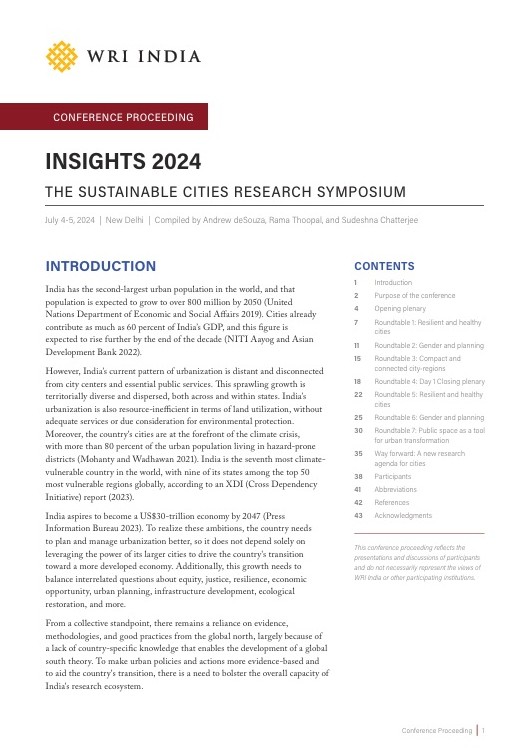What Clean Fuel Use in Every Household Means For Women Empowerment
by , , e -
This blog originally appeared on News18.com.
In 2019, about three lakh women died prematurely from diseases attributable to household air pollution from the use of polluting cooking fuels in India. Though women and children are more exposed to household air pollution, it is not limited to them. An average Indian citizen spends 80% time indoors. The use of polluting fuels, i.e., firewood, cow dung, and crop residues, not only contributes to indoor air pollution but also accounts for 17-30% of India’s ambient air pollution. Indian Institute of Technology Delhi’s study claims India can achieve National Ambient Air Quality Standards (NAAQS) standard for PM2.5 by only replacing all polluting cooking fuels with clean cooking fuels. Thus, reducing the use of solid fuels for cooking will reduce indoor and ambient air pollution while providing several other co-benefits such as energy security, women and children’s health benefits, empowerment, reduced inequalities, and timesaving.
Pradhan Mantri Ujjwala Yojana (PMUY) is one of the government’s successful schemes replacing polluting cooking fuels with LPG for more than eight crore households, contributing to a healthy lifestyle for approximately 40 crore people (considering an average household size to be five). Despite the success of PMUY, a significant portion of these users is still hesitant to use LPG as an exclusive fuel, forcing us to think about whether we have accomplished all the PMUY scheme targets.
A detailed analysis of available PMUY scheme data and surveys reveals that 25% of consumers did not avail even a single refill. The analysis indicates that these consumers still use solid fuels as their main fuel while stacking LPG and using it only for limited cooking activities. The Comptroller and Auditor General of India (CAG, 2019) report on PMUY, highlights that 1.93 crore PMUY consumers (who have completed more than a year as of March 31, 2018) used only 3.66 refills annually, much less than general LPG consumers (7-12 cylinders per annum).
The high cost of refill is one of the common reasons BPL households are unwilling to shift towards LPG even after getting subsidized connections. The National Sample Survey (2018) illustrates that 20% of a sample household’s average monthly per capita expenditure (MPCE) in India was INR 1,065. A cylinder refill cost of INR 500 would include nearly half of a household’s MPCE, which is not affordable for them. Hence, the consumers do not switch entirely towards LPG and continue the use of solid fuels.
Other factors include easy and free availability of solid fuels for cooking, taste of the food, etc. Due to lack of knowledge, people consider only easy and free accessibility of fuel as a significant factor while deciding to use solid fuels. Though LPG connections are credited to the women of the family, men being primary decision-makers, find it irrelevant to spend their earnings on cleaner cooking options when alternate fuels are available free of cost. However, women and children are the ones facing significant repercussions of traditional fuels. A survey found that in only 14% of the surveyed households (9,000 rural households), women decide what cooking fuel to use.
We should take steps to make clean fuel use mandatory in every household. Real emissions from fuel stacking (i.e., using more than one fuel for cooking, for instance, using LPG and wood for cooking), which are not accounted for while estimating emissions, are essential to understand the dynamics of air pollution and probable solutions for the same. The CAG report suggests a 5kg LPG cylinder as an affordable option for low-income households. We also need to carry out extensive campaigns under Extended PMUY (EPMUY2) to create awareness among the new and old PMUY beneficiaries. In addition to providing subsidies, creating ground-level awareness is also of prime importance and will help achieve the goal of the PMUY scheme and justify the government’s investments in providing subsidies on cooking fuels.
In India, with unstable international oil and gas prices, 50% of domestic LPG demand is fulfilled by import. Providing LPG fuel alone will not be enough for a country like ours with an approximate population of 138 crore. Hence, we also need to work on other fuel options like electricity through induction stoves. The households stacking solid fuels can be asked to stack cleaner fuels, i.e., electric/induction stoves along with LPG, in places with good electricity supply. Even if a rural household cooks one or two of its daily meals in electric/induction cookstoves, it helps bring down indoor emissions. Increasing the use of electricity in cooking in rural areas will increase demand, simultaneously increasing supply as well. This will then lead to development while also bringing pollution levels down.
Sustained use of clean fuels will reduce indoor and outdoor pollution, enhance women empowerment and ensure better health for all. Time saved by using them can be put to better use, for example, in educating children and women, who can, in return, contribute economically to their families’ wellbeing.
Views expressed here are the authors' own.


